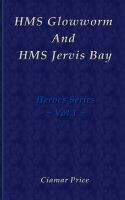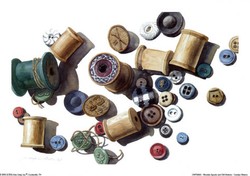
Ciamar Price ebooks
by tirial
A set of free ebook articles focusing on history, engineering and railways among other topics.
About these ebooks
Free for Kindle, Kobo, Nook and Online
These ebooks are based on lenses written on historical topics. Designed as introductions to the topic with links for further research, the articles are short (only a few thousand words) but cover the basic details of each case.
Originally available from lulu as PDFs, these are now downloadable from Smashwords in formats compatible with most e-readers, PDF, or available to read online on their website. Most importantly, they are free. The original lenses are linked for images, mulitmedia content and other supporting resources.
The Three Great Ships of Isambard Kingdom Brunel has been top of Smashwords Most Downloaded History ebook list since June 2010.
The Three Great Ships of Isambard Kingdom Brunel
The SS Great Western, SS Great Britain and SS Great Eastern
As well as tunnels, railways, and other feats of engineering, Brunel also turned his hand to ship-building. The results were three great ships, literally because each was the largest afloat when they were built. The SS Great Western was a conventional paddle-steamer, the Great Britain a revolutionary all iron oceangoing liner with a screw propellor, and the Great Eastern was simply unique. The largest ship built until the twentieth century, the Great Eastern had paddle-wheels, screw propellers and sails, a double hull, and a top speed of 14 knots. She was also the ship that broke him, and rumoured to be cursed.
The Three Great Ships
 The Three Great Ships of Isambard Kin... |
A visit to the SS Great Britain
The SS Great Britain is in drydock in Bristol
"The Three Great Ships" is based off these modules:
The SS Great Western
His first ship, allegedly built to extend the length of his railway route across the atlantic, the SS Great Western was his most conventional. A wooden ship with paddelwheels it set speed records and performed excellently in roles like liner, troop ship, and mail courier.
The SS Great Britain
Brunels second ship was revolutionary: All-iron with crew propellors instead of paddlewheels, and once again large. It is also the only surviving ship, and can be seen in Bristol after a salvage operation that brought it halfway round the world.
The SS Great Eastern
Brunel's third, final and largest ship, the Great Eastern was an engineering miracle. Unfortunately it was too far ahead of its time and was never commercially viable. However, during it's short life, it laid the first transatlatic telegraph cable.
Early Railways
Horse-drawn, Atmospheric Pressure, and Broad Gauge
The development of railways was not always a straight line from steam engines to the modern day, and in fact preceeds steam engines themselves. Early Railways contains the story of the first public railway in the world, an iron plate-way with horse-drawn wagons, which was when people began to consider railways as more than industrial goods transport. It features Brunel's experiment with an atmospheric pressure railway in South Devon, powered by static engines and coaches powered by postion, like a shot from a gun. Finally it also has the story of the North Star, the first, last and longest-lived Broad Gauge engine that ran on Brunel's Great Western Railway. As a little bit of bonus content, short pieces of four famous steam engines are included at the back.
Early Railways
 Early Railways |
"Early Railways" is based off these modules
Brunel's Atmospheric Railway
Inspired by an Irish experiment, the Dalkwy railway, Brunel built the South Devon railway to be driven by air pressure, created by static steam engines at either end. Despite problems, the backers were enthusiastic and it remains one of the few projects ended because Brunel decided it was impractical.
The Surrey Iron Railway
The first public railway in the world, it predated steam engins and used horse-drawn wagons on iron L shaped rails. Built for moving cement and industrial materials, farmers could pay a toll to use the plateway to move their goods to market.
HMS Glowworm, and HMS Jervis Bay and convoy HX84
Navy Heroes from the Second World War
Two tales of Navy heroes in the Second World War, both of whom earned the Victoria Cross, Britain and the Commonwealth's highest award for valour.
HMS Glowworm was a destroyer on patrol in World War Two. Seperated from her convoy, she encountered the german invasion force headed for Norway but was lead under the guns of a battleship, the Admiral Hipper. Unable to retreat she attempted to relay her position while engaging the battleship, and engagement that ended with her captain's famous order "Stand by to ram." She was defeated, her signal never received by the navy, but she did severe damage to the battleship, requiring lengthy repairs.
HMS Jervis Bay was the sole armed escort for convoy HX 84, from Halifax to Britain. An unarmoured converted liner with two six inch guns, when the convoy was ambushed by the Admiral Scheer she moved into the battleship's path and attacked, to buy the freighters time to scatter. She was sunk but she achieved her aims. Other ships in the convoy included the San Demetrio, a fuel tanker set on fire whose crew reboarded it and managed to put out the flames, rig a steering device and sail her home, the Stureholm who went back under cover of darkness to pick up the survivors from the Jervis Bay, and the Beaverford who picked up from the Jervis Bay and kept the Admiral Schere occupised for a further five hours to give the rest of the convoy time to escape.
"Navy Heroes" is based on these modules
HMS Glowworm
After becoming seperated from their fellow ships, the Glowworm discovered the German invasion fleet heading for Norway. It was engaged by the Admiral Hipper while trying to notify the British fleet. It severely damaged the larger vessel, but was sunk. Lieutenant-Commander Roope, captain of the Glowworm, was awarded a VC for the action.
The Jervis Bay and convoy HX84
When HX84 was attacked in the Atlantic by the Admiral Sheer, the convoy's only armed escort, the Jervis Bay, moved into the path of the battleship to buy them time to escape. It worked, at the cost of the crew's lives. Other ships in the convoy also distinguished themselves, including San Demetrio, Stureholm and Beaverford.
Navy heroes
 HMS Glowworm, HMS Jervis Bay and conv... |
You might also like
Collecting Seashells: Types of ShellsA look at some seashells you may see on Florida beaches with photos of my own...
Buttons from the Rag Bag! Button Jar Math ActivitiesSave the buttons from discarded clothing and recycle them as fun, hands-on ma...



 Alternatives to Tweetdeckon 03/06/2015
Alternatives to Tweetdeckon 03/06/2015
 Computer Game reviewson 02/28/2015
Computer Game reviewson 02/28/2015
 The Bard's Taleon 02/04/2015
The Bard's Taleon 02/04/2015
 Domeboon 02/04/2015
Domeboon 02/04/2015


Comments